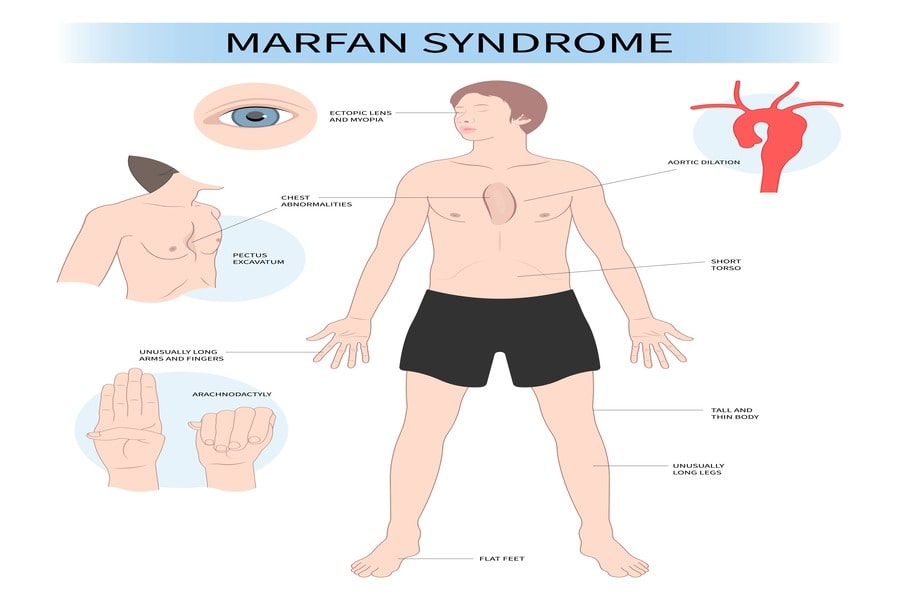Marfan Syndrome is a genetic disorder that affects the body’s connective tissue, which provides support and structure to various organs, including the heart, blood vessels, eyes, and skeleton. The disorder is caused by a mutation in the FBN1 gene, which encodes the protein fibrillin-1, an essential component of connective tissue. Marfan Syndrome is inherited in an autosomal dominant pattern, meaning that an affected individual has a 50% chance of passing the condition to their offspring.
Overview
Marfan Syndrome affects approximately 1 in 5,000 people worldwide and can manifest in various ways, depending on the individual. The disorder can impact many parts of the body, including the cardiovascular, musculoskeletal, and ocular systems. Although there is no cure for Marfan Syndrome, proper management can improve the quality of life and reduce the risk of complications.
Symptoms
Marfan Syndrome can present with a wide range of symptoms, which can vary in severity. Some common features include:
- Skeletal System: Long limbs, scoliosis (curvature of the spine), chest deformities (pectus excavatum or pectus carinatum), and joint hypermobility.
- Cardiovascular System: Aortic enlargement or aneurysm, mitral valve prolapse, and aortic dissection (tearing of the aorta’s inner wall).
- Eyes: Lens dislocation (ectopia lentis), nearsightedness (myopia), glaucoma, and retinal detachment.
- Other Symptoms: Stretch marks, lung issues, and dural ectasia (enlargement of the dural sac surrounding the spinal cord).
Causes
Marfan Syndrome is caused by a mutation in the FBN1 gene, which leads to abnormal production of fibrillin-1, a protein that plays a crucial role in the formation and maintenance of connective tissue. The mutation disrupts the structural integrity of the connective tissue, leading to the characteristic symptoms of Marfan.
Risk Factors
The primary risk factor for Marfan Syndrome is having a family history of the disorder. Because it is inherited in an autosomal dominant pattern, individuals with one affected parent have a 50% chance of inheriting the condition.
Preventing Complications
Although Marfan cannot be cured, several strategies can help manage symptoms and prevent complications:
- Regular Monitoring: Regular check-ups with a cardiologist to monitor the heart and aorta, as well as eye exams, are essential.
- Lifestyle Modifications: Avoid high-impact sports and activities that put excessive strain on the heart or aorta.
- Medications: Beta-blockers or angiotensin II receptor blockers may be prescribed to reduce stress on the aorta and prevent enlargement.
- Surgery: In some cases, surgery may be necessary to repair or replace the aorta or heart valves.
When to See a Doctor
Individuals with a family history of Marfan Syndrome or those experiencing symptoms such as chest pain, shortness of breath, or vision problems should seek medical attention. Early diagnosis and management are crucial for preventing complications and improving the quality of life.
Marfan Syndrome is a genetic disorder that affects the connective tissue and can have wide-ranging effects on the body. With proper management, individuals with Marfan can lead fulfilling lives. If you have concerns or questions about Marfan Syndrome, consult a healthcare professional for a comprehensive evaluation and personalized treatment plan.









